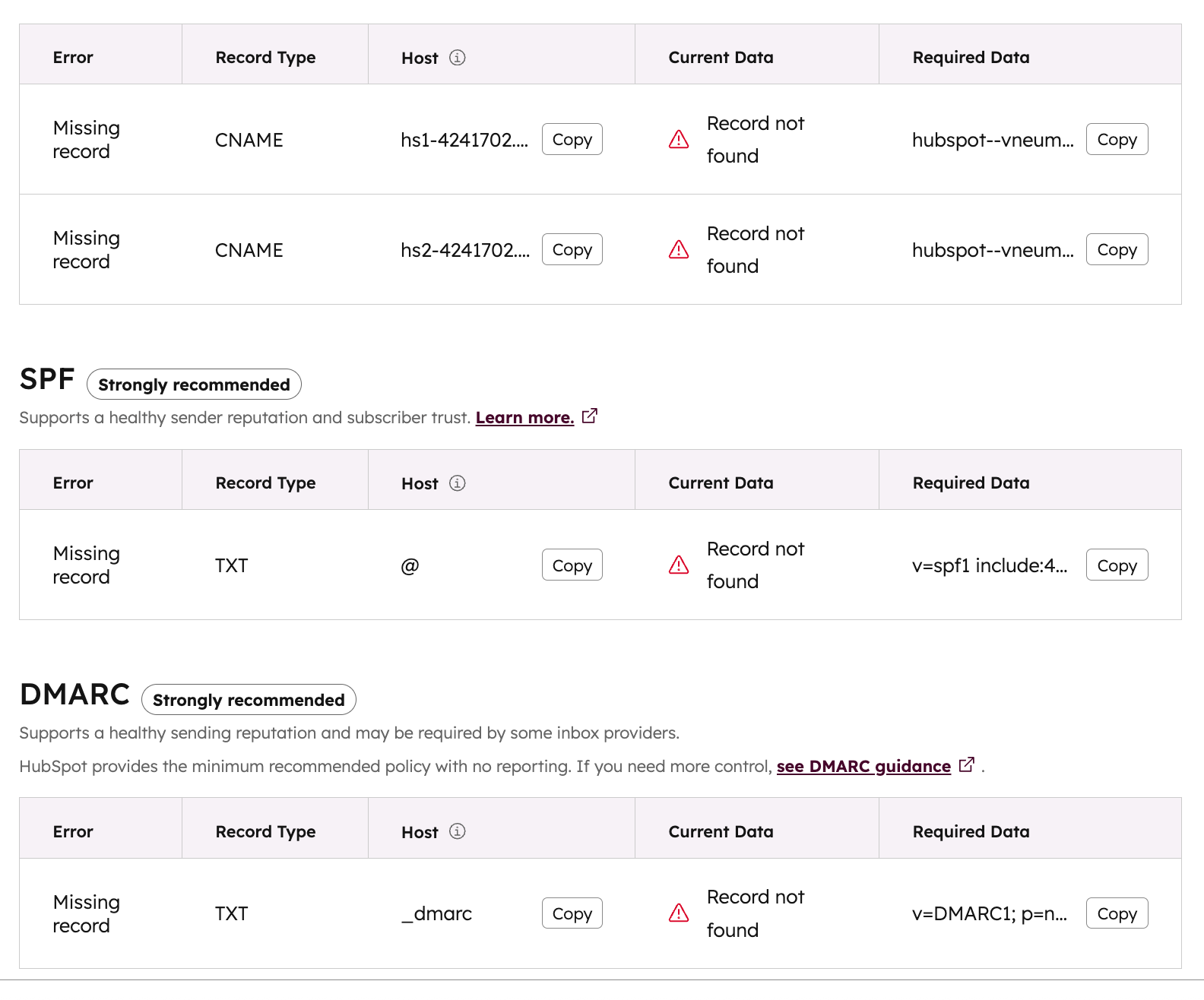- Knowledge Base
- Marketing
- Marketing Email
- Connect a dedicated IP address for sending emails
Connect a dedicated IP address for sending emails
Last updated: October 28, 2025
Available with any of the following subscriptions, except where noted:
-
Marketing Hub Professional, Enterprise
With a dedicated IP address, all marketing emails you send from HubSpot will come from an IP address that only your account uses, rather than from a shared IP address. A dedicated IP address is a good fit for accounts that send a high volume of email and need greater control over email sending reputation.
Subscription required The Dedicated IP Address Add-On or Transactional Email Add-On is required to connect a dedicated IP address.
Understand limitations & considerations
- Accounts with the Dedicated IP Address Add-On will have a warm-up period of 40 days before all traffic is routed to the dedicated IP address. Accounts with the Transactional Email Add-On can use the dedicated IP address immediately.
- If you stop sending emails for a period of longer than 7 days, the warm-up process will be paused until you resume sending.
- There are no sending limits when sending emails over a dedicated IP address.
- If you're in an active trial for the Transactional Email Add-On, you do not need to connect a dedicated IP address during the trial period.
Connect your dedicated IP address
To connect your dedicated IP address in your domain settings:
- In your HubSpot account, click the settings settings icon in the top navigation bar.
- In the left sidebar menu, navigate to Content > Domains & URLs.
- Click Connect a domain.
- In the dialog box, select Dedicated IP, then click Connect.
- Under Email address, enter an email address that you use to send marketing emails, then click Next.
- Review the two domains that you'll be setting up:
- Email sending domain: this domain will be shown in the From address field of your emails. This is the domain that your email recipients will see in their inbox.
- Dedicated IP sending domain: this subdomain will be used as the mailed-by or return-path domain in the email header for marketing and transactional sends. The subdomain is necessary for the delivery of your emails, but isn't usually visible to your email recipients.
- In the Update your DNS records section, click Copy next to the value in the Host (Name) column and paste it into the corresponding field in your DNS provider account. Then, click Copy next to the value in the Value column and paste it into the corresponding field:
- A record: associates your dedicated IP address with your domain.
- MX record: processes bounces, spam reports, and unsubscribes to ensure the associated analytics will display in your HubSpot account after you send an email. The MX record priority must be set to 0 in your DNS hosting provider.
- TXT record: sets up Sender Policy Framework (SPF) authentication. SPF is used by your recipients' email servers to verify the identity of the sender.
- CNAME records: grant HubSpot permission to send emails on your behalf by connecting an email sending domain for DKIM (Domain Keys Identified Mail) email authentication.
Please note: some providers, such as Network Solutions or GoDaddy, will add your brand domain and top-level domain to the end of these DNS records automatically. For example, if you enter {hsdomainkey}.yourdomain.com, a provider may change that value to {hsdomainkey}.yourdomain.yourdomain.com, which will result in a DNS error. Instead, copy the value but remove the extra .yourdomain.com when pasting it into the corresponding field in your DNS provider account.
- After you finish setting up your DNS records, you may need to wait while your email sending domain is verified:
- If your DNS records are set up correctly, you'll see a Verified message. This can take up to 24 hours to take effect. Once you see the Verified message, click Done.
- If your DNS records still need to be set up or are still processing, you'll see a Record not found error displayed to the right of one or all of your records. Click Check again in the bottom right to see if the changes have propagated.

HubSpot will monitor the connectivity of your dedicated IP address, and if one of your DNS records is taken down or updated to an invalid value, you'll be contacted via email with details on how to fix your DNS configuration.
Understand the warm-up process
If you have purchased the Dedicated IP Add-On, HubSpot will initiate an automated warm-up process after you finish setting up your DNS records and you send your first marketing email. The goal of this warm-up process is to build sender reputation with mailbox providers and avoid bounces for your new dedicated IP address.
During this process, HubSpot incrementally shifts traffic from shared IP addresses to your new dedicated IP address. The warm-up process will take 40 days to complete.